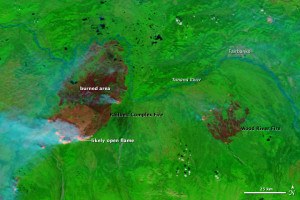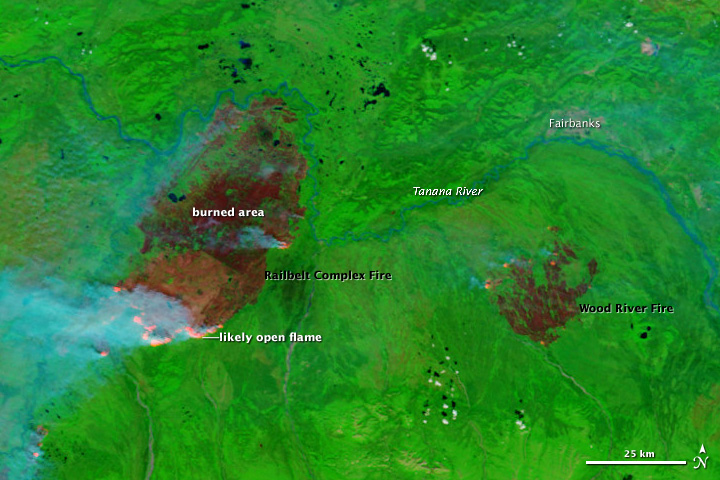The Alaska Supreme Court ruled that a group of landowners may be eligible for compensation after suing the state for burning their properties.
The landowners’ claim dates to 2010 when they sued after their land was burned during the Railbelt Complex wildfires in 2009.

A jury may now decide whether the burnout fire was necessary to fight an imminent emergency.
The Railbelt Complex fires consumed more than 600,000 acres during an unusually hot, dry summer.
None of the plaintiffs lost structures in the controlled fire, but all the trees and vegetation on the properties were burned.
Their attorney, William Satterberg, called the burnout fire a “fire of convenience,” saying the state could have lit the pre-emptive fire farther away.
“It was easier to light it there than it was to do it a mile away,” he said.
The fire lowered the aesthetic appeal of the lakeside homes, because all that’s visible outside their cabins’ back doors are the remains of a forest fire, Satterberg said.
The property owners’ initial lawsuit said the state used eminent domain, a provision that says private property shall not be damaged for public use without just compensation. The landowners also had filed claims against the state for negligence and intentional misconduct.
A Superior Court judge dismissed all the claims, but the landowners appealed. Then the Supreme Court upheld the dismissal of the negligence and misconduct claims, but reversed the dismissal of the eminent domain claim, questioning whether the way the state exercised its police powers was justified.
Was this article valuable?
Here are more articles you may enjoy.


 Insurance AI Demo Day Calendar Announced
Insurance AI Demo Day Calendar Announced  Trump Sues BBC for $10 Billion Over Documentary Edit
Trump Sues BBC for $10 Billion Over Documentary Edit  Rare Weather Warning Issued as Strong Gusts Fuel Colorado Wildfire Threats
Rare Weather Warning Issued as Strong Gusts Fuel Colorado Wildfire Threats  Wells Fargo Sued by Ex-Manager Who Said Bank Faked Diversity
Wells Fargo Sued by Ex-Manager Who Said Bank Faked Diversity 